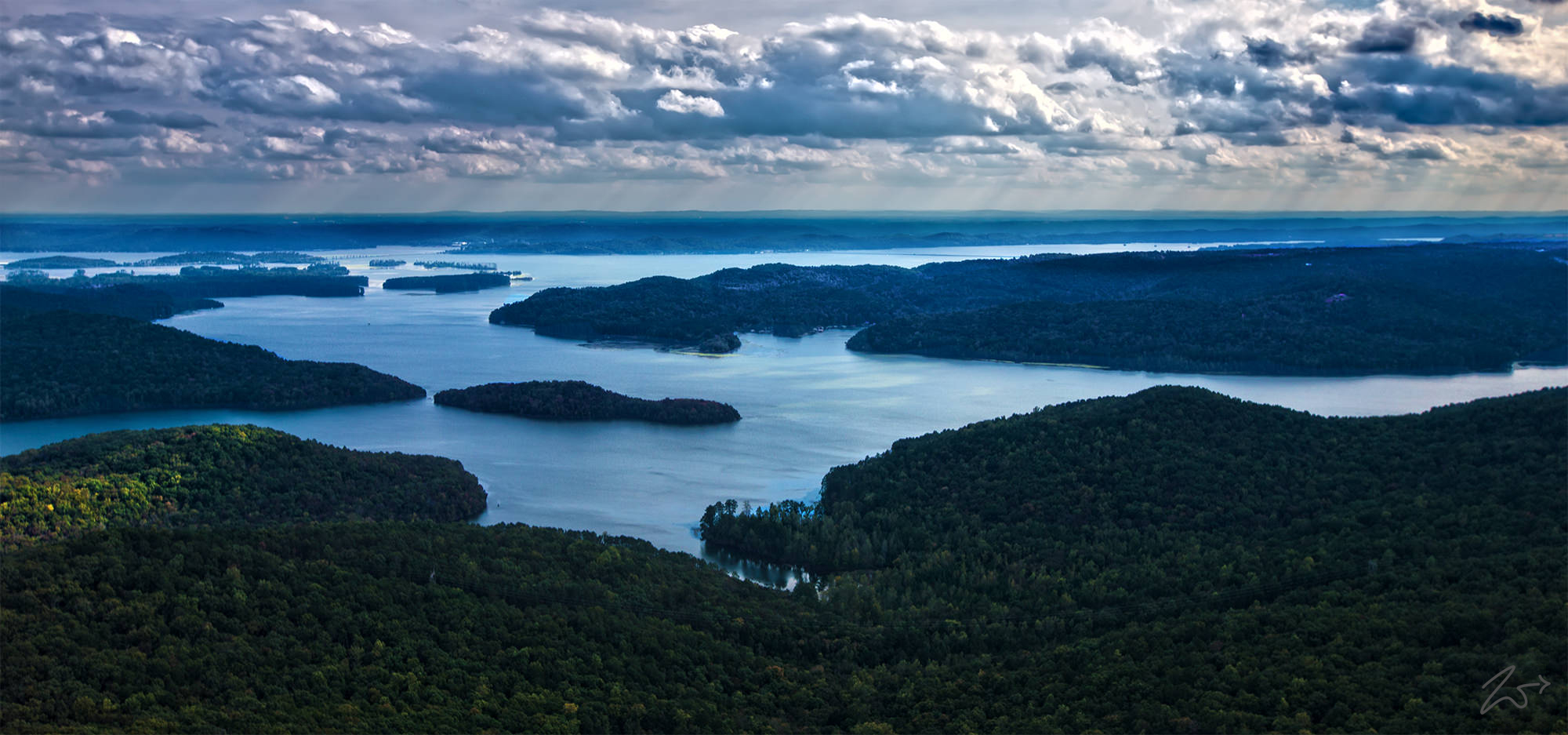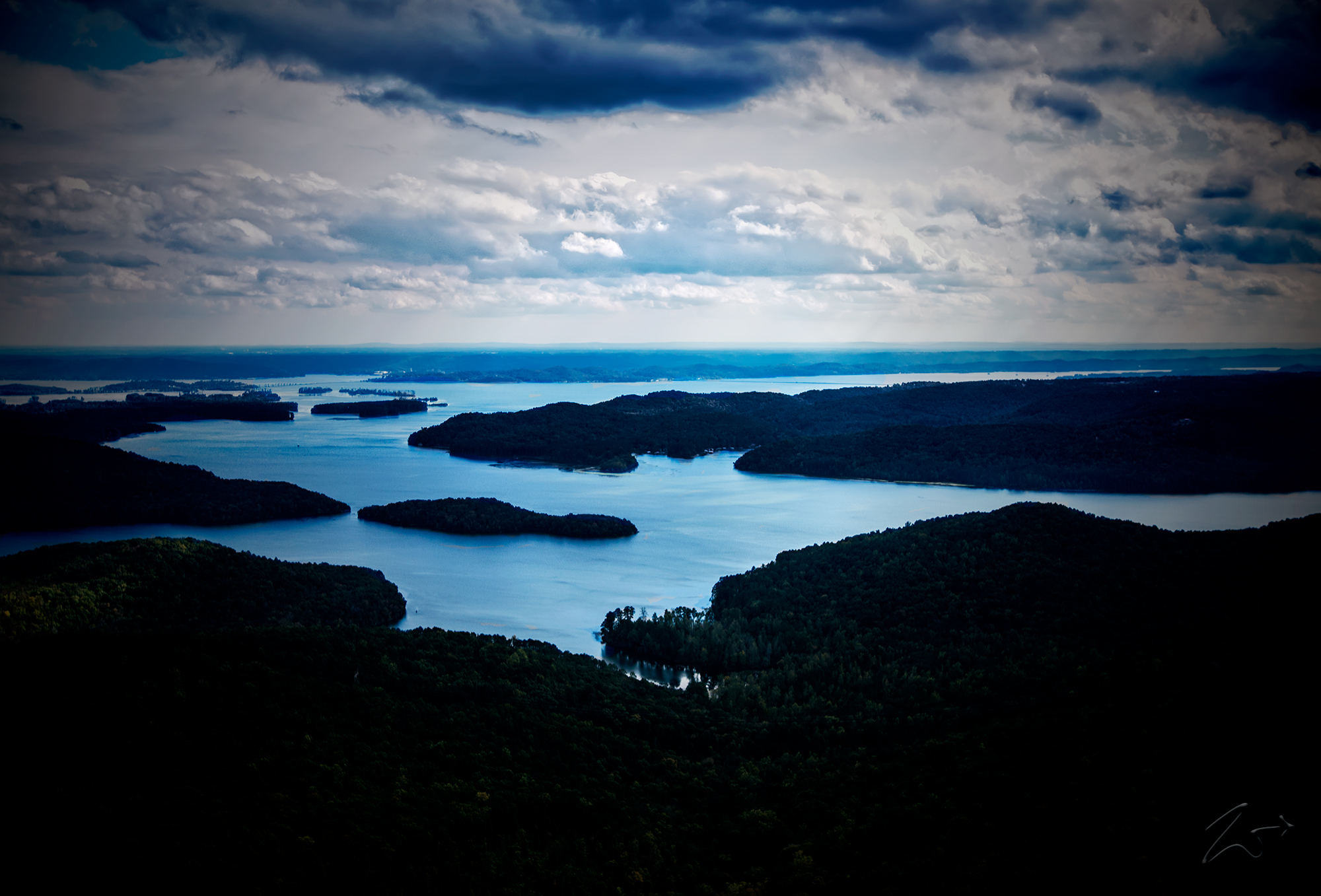
This is an image of Honeycomb Cove, part of Guntersville Lake on the Tennessee River in Northern Alabama. Before the series of 29 dams were built in the early 20th century the river was much lower and a number of lakes and coves did not exist so this area would have looked quite different back then. The town of Guntersville lies on the far bank of the lake in the distance in this photo.
The small island in the foreground is known as Goat Island and the small inlet at the bottom of this image is Pumpkin Hollow. The point just to the left of Goat Island is known as Fort Deposit Point. This was the location of a supply fort built by General Andrew Jackson during the Creek Wars in the early 19th Century.
Zedekiah: “I shot these pictures in the springtime over a two day period as I was chasing rainstorms across the Tennessee Valley from Muscle Shoals to Huntsville then Mentone, Alabama. I am shooting to the east for this image. I spent many years in my youth camping and fishing in this very cove. I used to love using the old rope swing on the side of the road to dive into the river.”

In older times when animal power dominated transportation, there was no safe or secure way to cross from the east over this long mountain range full of endless ridges and valleys. Early colonial settlers considered these mountainous ridges the far Wild West and rarely ventured beyond them.
Waterways such as the long and winding Tennessee River were the superhighways of the day, taking tribesmen and traders down from the Smokey Mountains to the lower deltas. Eventually American pioneers such as Daniel Boone and Davy Crockett ventured through the mountainous passes, settling on the Cumberland Plateau near where Tennessee, Alabama and Georgia meet along the Tennessee River, west of Nickajack Lake which would be located about 30 miles to the left of this image.
These lands are full of limestone caves and caverns, historical Native American sites, and old pioneer homesteads and cabins. On the border of Tennessee and Alabama in the Cumberland Plateau lies the Paint Rock Valley. Flanked by steep mountains and threaded by a meandering river, this place is so remote the residents of some of the outlying communities lived in a state of isolation that is hard to envision, electricity did not reach the valley until 1949.

